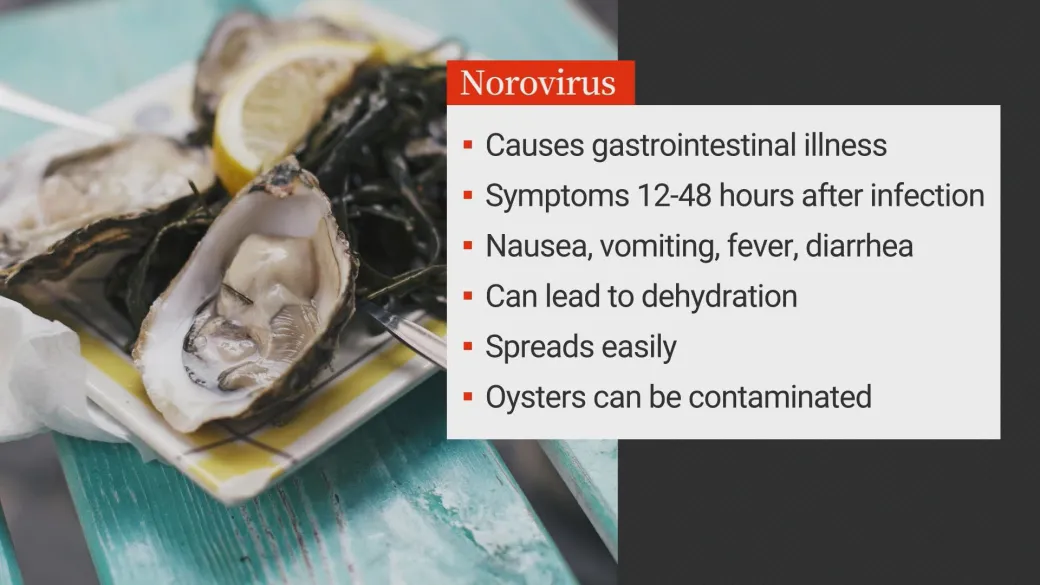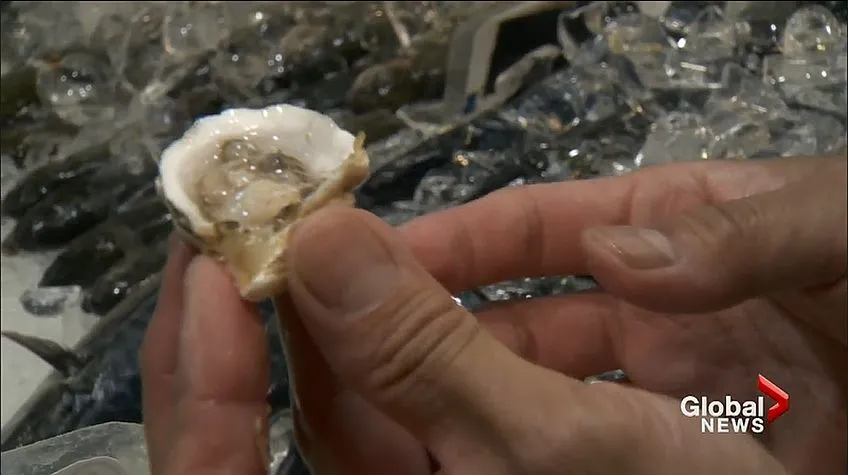

As the holiday season kicks into full swing, raw oysters are often a favourite on festive menus.

But after dozens of people in British Columbia recently fell ill after eating raw oysters, many may be wondering if they should skip the shellfish this year to keep safe.
The BC Centre for Disease Control on Thursday posted a warning that between Nov. 1 and Dec. 18, 64 cases of a “norovirus-like” gastrointestinal illnesses were reported in the province, after people ate raw oysters from restaurants and local retailers.
Some people went to emergency departments with symptoms of diarrhea, vomiting, or stomach pain, but there have been no hospital admissions reported, health authorities said.
“We are reminding everyone about the risks of consuming raw or undercooked oysters. Cooking destroys viruses and bacteria and decreases the risk of illness,” the BC Centers for Disease Control said in a social media post.
Noroviruses are a group of viruses that cause stomach issues like diarrhea and vomiting. They spread easily through contact with infected people’s stool or vomit.
Some foods can also get contaminated right from the start — like oysters, which can pick up the virus from sewage in the water before they’re harvested, according to the Public Health Agency of Canada (PHAC).

Sylvain Charlebois, director of Dalhousie University’s Agrifood Analytics Lab, said because oysters may be a holiday tradition for some, it’s important to stay vigilant when consuming them.
“The thing about the holidays is that people do treat themselves to some oysters, and their bodies may not be accustomed to dealing with some of the viruses that they ingest,” Charlebois said.
“During the holidays, you’re often more tired and drinking more than usual, so getting sick with a virus tends to hit harder at this time of year,” he said, adding that when it comes to norovirus, children, older adults and pregnant people are especially vulnerable.
So before you grab that oyster, here’s a bit more of what you need to know about oysters, bacteria and viruses.
Raw oysters can be a risky holiday treat as they may contain harmful bacteria, viruses and toxins that can lead to foodborne illnesses, explained Keith Warriner, a food safety professor at the University of Guelph.
Oysters feed by filtering water and microorganisms, which can lead to toxins accumulating in their tissues, he said, adding that it’s not just oysters — any bivalve shellfish (like mussels and clams) can absorb harmful substances from the water they filter.
“What happens is that when you get polluted water, like sewage discharge, septic… the oysters concentrate these pathogens. Norovirus is one, and the other famous one is vibrio,” Warruner said.
“Once they get in there, it is difficult to remove. There is a process called de-puration when you get these shellfish in these tanks and they try and flush them through with water. Sometimes they use sanitizers, but they have to keep the oysters alive, as you usually don’t cook oysters.”
So, Warriner said, what happens in the sea can end up on your plate and make you sick, especially when it comes to norovirus, which is difficult to kill and highly contagious.
The good news is you can eliminate the norovirus by cooking the oysters if you choose not to eat them raw.

Although B.C. health officials linked the latest outbreak to “norovirus-like” gastroenteritis, Warriner said he wouldn’t be surprised if vibrio was also involved.
Vibrio is a type of bacteria commonly found in warm coastal waters and is often linked to shellfish, like oysters. It thrives in warmer waters, especially when temperatures rise above 15 C.
With rising ocean temperatures due to climate change, vibrio can multiply more quickly in the water where oysters are harvested, according to PHAC.
“Vibrio used to be this sort of thing you would find in the Gulf of Mexico where the waters of warm, now they’re recovering it from the coasts of B.C. and Nova Scotia,” Warriner said.
If someone ingests the bacteria, symptoms may include watery or bloody diarrhea, stomach cramps, nausea, vomiting, fever, and headache, he said.
If you’re planning to enjoy oysters or any other raw shellfish during the holidays, Charlebois advises finding out where they come from.
“That’s the most important thing is to know the source… is to actually deal with a trustworthy source. Unfortunately, some oyster farms once in a while are exposed to some contaminants. So it’s important consumers know where their oysters are coming from,” he said.
The risk is lower if the oysters are part of a short distribution chain, as opposed to those that have traveled long distances, which may increase the risk to ensure their freshness, Charlebois said.
B.C., New Brunswick, Prince Edward Island and Nova Scotia are prime locations for farmed oysters in Canada, though they are also imported from countries like Thailand.

Charlebois added that although oyster contamination can happen, it’s not “overly common.”
“But you got you have to be careful. Obviously, norovirus is a really contagious virus. You want to be extremely careful, especially with people with a compromised immune system, seniors, pregnant women and children.”
Since eating oysters can always pose a risk of contamination, Warriner suggests that you can skip them altogether if you’d prefer.
“If you said to me which area makes the safest oysters, I couldn’t even tell you, because every single place I know that produces oysters has some sort of issue with water quality,” he added.


